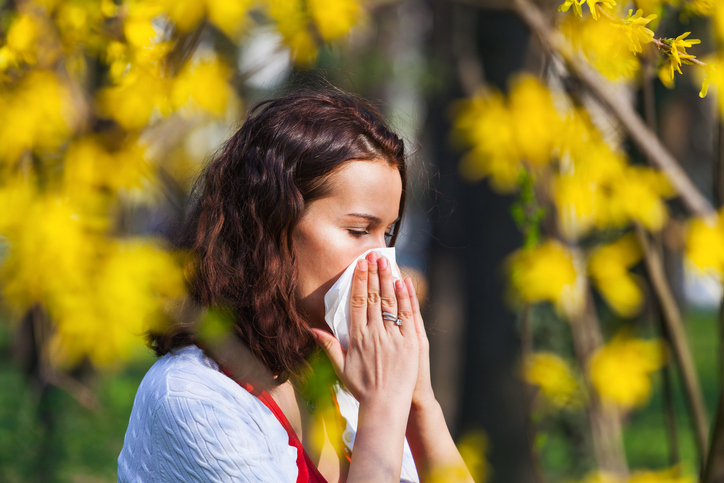Springtime allergies getting you down? Whether the culprit is pollen, dust, mold or grass, the resulting sneezing fits, sniffles, itchy eyes, and scratchy throat can make anyone miserable. If you are among the more than 50 million Americans who suffer from seasonal or year-round allergies, there is hope!
Talking with your doctor about your allergies is the best course of action because they can help you address your allergy triggers, prescribe medications, or suggest other forms of treatment like immunotherapy, for example. But there are a number of steps you can take to reduce the effects of allergens, as well as limit your exposure to them in your home:
- Check the pollen count. If flowers and trees make you sneezy, check out the local pollen count in your area. Click here to see the local and national allergy forecast, and plan to stay inside as much as possible during times when the pollen count is high.
- Shut the windows. On days when the pollen count is high, keep the windows closed.
- Shift your schedule. On windy days, consider staying inside between 10 AM and 4 PM, when pollen counts as well as mold counts tend to be at their highest for the day.
- De-pollen yourself. If you’ve been out and about, consider changing your clothes or taking a shower when you arrive home—this can help you remove any pollen that may have fallen or blown onto you while you were outside.
- Drive sneeze-free. Replacing the car’s cabin air filters can help you reduce the amount of dust and other allergens that come in through the vents. Follow the manufacturer’s recommendations for how often you replace your filters.
- Dust often. One of the best ways to control indoor allergens is by getting rid of dust. Dust mites are the most common trigger of asthma and allergy symptoms inside the home. It’s best to use a damp cloth when dusting to avoid scattering too many allergen particles into the air. For an extra layer of protection, try wearing a mask while you dust—it can help prevent you from breathing in dust that is kicked up as you clean.
- Vacuum frequently. Vacuuming in areas that accumulate dust, such as carpeting and around, under, and behind furniture, can help control allergens in your home. Consider choosing a vacuum with a HEPA filter to help trap dust mite particles, pet dander, pet hair and more.
- Wash thoroughly. Dust mites tend to live in bedding, pillows and throw rugs. Try to wash your bedding in hot water at least once a week and dry it in a hot dryer to kill the dust mites. To reduce the effects of dust mites, purchase mite-proof covers for your mattress, pillows and box spring.
- Keep Fido out. If you’re allergic to pet dander or pet hair, it might be a good idea to not let your furry friend sleep in your bed. To avoid breathing in pet allergens all night long, shut the bedroom door (and if you’re an especially nice pet owner, consider buying your pet a bed of their own, which can be kept in a room other than your bedroom). Also, vacuuming your home and washing your pet often are two good ways to reduce pet hair or pet dander around the house.
- Rinse your sinuses. Using a saline nasal solution, or nasal spray, can help improve allergy symptoms. You can also use a Neti pot or a specially designed squeeze bottle to flush out thickened mucus and irritants from your nose. However, improper use of a Neti pot or other device can lead to infection, so read and follow the package directions carefully and always use water that’s distilled, sterile, previously boiled and cooled, or filtered (using a filter with an absolute pore size of 1 micron or smaller) to make up the irrigation solution.
- Talk to your doctor. Ask your primary care physician or your allergist if any of these common allergy remedies would be right for you: Antihistamines, decongestants, saline nasal sprays, eye drops, and/or allergy shots.
If you have more questions about how to manage your allergies, make sure to talk to your primary care physician or your allergist.
For Health Advocate members
Remember, if you’re a Health Advocate member, you can call your Personal Health Advocate, who can help you find an in-network provider in your area or schedule an appointment with your doctor so you can discuss other allergy treatment options.



